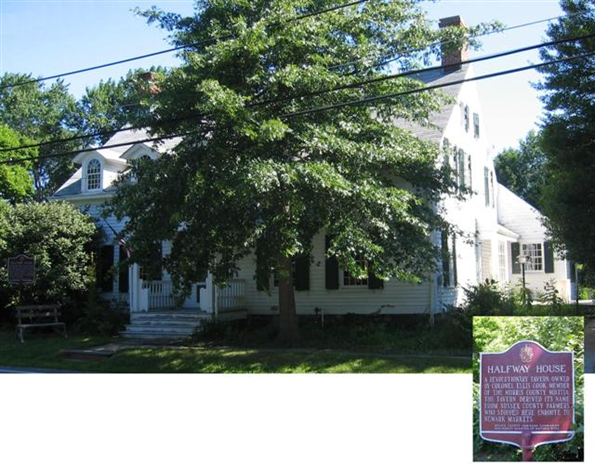A Brief History of East Hanover, NJ

Prehistoric East Hanover
During the Ice Age, land in northern New Jersey that now includes East Hanover was shaped by glaciers moving across the land. During this time, the glaciers formed valleys, riverbeds, and mountains. Shortly afterward, the area was submerged under pre-historic Lake Passaic. The underground body of water that exists beneath East Hanover today is a reminder of this history.
Native Americans in New Jersey
The first settlers of the land where East Hanover now stands were the Lenni Lenape Indians. Meaning “original people,” the Lenni Lenape were divided into three sub-tribes that occupied the length of what we now know as New Jersey. The Unami, meaning the people down the river, occupied the land now known as East Hanover. Attracted by the excellent source of water, the abundant animal life, and the advantageous location between the Delaware and Hudson River settlements of Indians. Other sub-tribes were the Minsi, who occupied areas farther north than East Hanover, and the Unalachtigo, who occupied areas farther south.
Europeans in East Hanover
The Unamis dominance in the area was disturbed when the Europeans landed in their “New World” in the late 1600s. However, this New World was nothing new to the Unami, who interacted peacefully with the Europeans. Though they did not believe in or understand the idea of owning land, the Unami agreed to surrender their rights to the area including East Hanover. On August 13, 1708, several thousand acres were sold by Unami for 30 pounds (cash), 10 strands of water blankets, 15 kettles, 20 axes, 20 hoes, 10 duffel blankets, a half barrel of wine, 1 barrel of rum, 1 barrel of cyder. 3 files, 1 gun boer, 1 auger, 4 pistols, 4 cutlasses, 10 guns, 100 bars of lead, 1/2 barrel of powder, 10 white blankets, 20 shirts, and 100 knives.
Hanover Township
The name Hanover came from the House of Hannover in Germany. This namesake was given to the Township of Hanover (which included present-day East Hanover) on December 7, 1720 as a sign of respect to King George I of the House of Hannover, a British king who ruled over the American colonies in the eighteenth century. Unique among towns, East Hanover is defined by the joining of two rivers, the Whippany to the west and north and the Passaic to the east and north. This geographic effect led to the early name of East Hanover, “Hanover Neck.” Since the creation of Hanover Township in 1720, its size has been considerably decreased as the population of the area has increased. Originally encompassing Morris County and parts of Sussex and Warren County, Hanover Township became too unwieldy for a single local government as time passed. The members of the government felt that Hanover Township needed to break apart into smaller towns that could provide more responsive local control, even if it meant increased taxes to support new facilities for each.
Population of Hanover Township
|
Date |
Population |
|
1810 |
3,843 |
|
1830 |
3,718 |
|
1850 |
3,608 |
|
1870 |
3,624 |
|
1890 |
5,366 |
|
1910 |
6,228 |
|
1930 |
2,516 |
Introduction to East Hanover
Incorporated in 1928, the Township of East Hanover covers an area of 8.2 square miles. It is 25 miles west of New York City and 15 miles west of the City of Newark. The Passaic River is on its Eastern border and the Whippany River is on its Western side. Parsippany, Troy Hills, Florham Park, Hanover Township (Whippany), Roseland, Livingston and Montville are the municipalities adjacent to East Hanover. Routes 10 and 280 are major arteries which pass through East Hanover along with Eagle Rock Avenue. Largely developed, East Hanover is proud of such major corporations as Novartis and Nabisco in addition to more than 2100 other business enterprises operating in industrial parks, contemporary office complexes and retail stores. Route 10 is becoming one of the finest shopping areas in New Jersey. Mount Pleasant Avenue contains a historical district, which has been placed in the Congressional Record. The First Presbyterian Church and its adjoining graveyard date back to the Revolutionary War. Many American Indian artifacts have been discovered in various parts of East Hanover. Presently the government of the Township of East Hanover is the small municipality Mayor and Council Form. The Mayor is Chief Executive Officer of the Township and participates and presides over the meetings of the council. East Hanover is in the 26th state legislative district.
|
Population Growth |
|
| 1920 |
600 |
| 1930 |
946 |
| 1940 |
1,579 |
| 1950 |
2,151 |
| 1960 |
4,379 |
| 1970 |
7,734 |
| 1980 |
9,319 |
| 1990 |
9,926 |
| 2000 |
11,393 |
| White |
9,732 |
| Hispanic |
312 |
| Asian |
1,257 |
| Black |
64 |
| Am. Indian |
2 |
| Other |
1 |
| Age 65 and up |
1,662 |
| Age under 18 |
2,565 |


